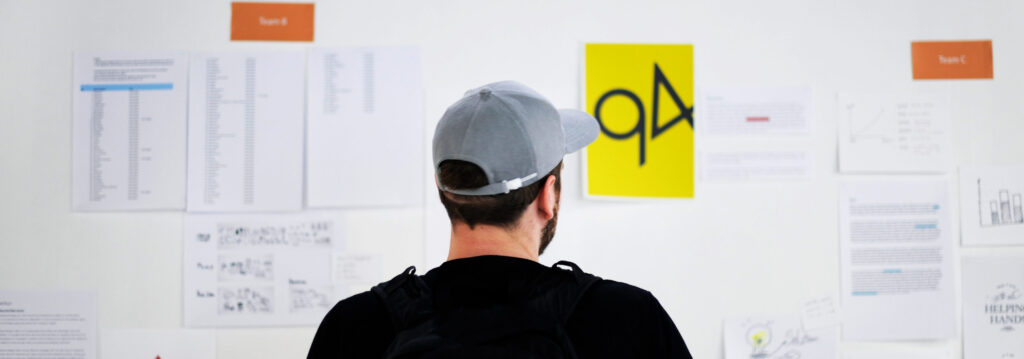My name is Sam Thomas and as a Creative Lead, I create and design audience experiences. I’m able to use my skills in graphic design to create meaningful themes.
Creative themes or concepts are frequently applied within advertising and design industries to help communicate a story, message or feeling without saying a word.
At NKD we set our targets on achieving a theme that adds bags of value to the business and ultimately, gives the employee an experience that can change their mind-set.
A creative theme is the outcome of an idea. The idea is the overarching message you’re trying to communicate, it’s not deciding everything should be the colour blue, or having a strap line slapped on every piece of material.
It should be a combination of techniques and solutions that immerses the audience and translates the purpose of the learning. We use the insights gathered from our discovery sessions on the clients’ culture and audience profiles to inform our design thinking in developing concepts and themes. This ensures that our theme and creative story telling really connects with the audience on an emotional level. When applying creative thinking to a theme, I want a clear rationale throughout, and then, once I’ve settled on an idea that works – design decisions spark into life, fun and excitement takes over and there are multiple possibilities of how to tell the same story.
A few benefits of implementing a creative theme to learning:
- A visual dialogue might resonate more effectively with the audience. If you want an employee to leave a learning module thinking differently sometimes a creative theme can have a longer standing impression than stand-alone learning activities.
- It is human nature to be inquisitive, a creative theme can add a level of intrigue for the participant. It’s important to not make an idea too difficult to understand – the audience can feel disheartened and quickly lose interest, similarly you don’t want something so obvious that the audience is put off. The right theme should be engaging, the audience will recognise that it is a bespoke experience for their business needs.
- To see things in a different perspective. Themes should be relevant to the business strategy, and the purpose of the learning. So, let’s have some fun with how we tell that story, perhaps using an analogy can tell the story in a better way.
- The look and feel is fresh and immersive. Quite often our learning and development experiences are company firsts. What a great opportunity to design a theme that really conveys the excitement of doing something for the very first time.
Projects are often an ongoing and evolving process, meaning that the audience group can grow and change. A theme should be flexible, as a designer I have to think – is this able to work as a pull up banner as well as a VR experience?
Themes serve as a great value towards learning and development. Their purpose to engage and inspire the audience can be the turning point to how successful the learning experience is.
What do our clients think? Watch this short video and see DAA’s reaction to the creative execution that helped shape their learning experience.
Below are examples of mood boards I have created for a recent project I’ve worked on – the creative theme here being sports, evoking feelings of teamwork, togetherness, emotion and energy.



